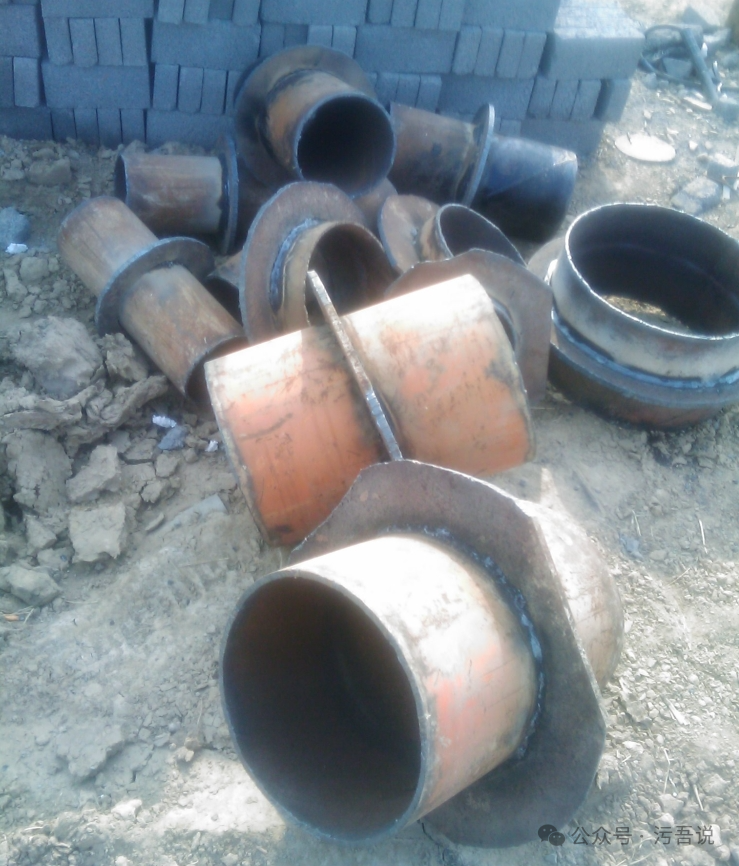1. Drawing Usage Instructions:
Process construction drawings primarily reflect process design.
For civil/structural designs of structures/buildings, refer to the respective Architectural, Building Structure, and Tank Structure design drawings.
Always use process drawings in conjunction with corresponding specialized construction drawings.

2. Structure Positioning Method:
Rectangular Tanks: Annotate coordinates of internal wall corners.
Circular Tanks: Annotate center coordinates.
Buildings: Annotate coordinates of column grid intersections (axis points).
Roads: Annotate coordinates of centerline intersections.
Fence Walls: Annotate coordinates of external corner intersections.
3. Pipeline Positioning:
Unless otherwise specified, all pipeline positioning and spacing dimensions are referenced to the pipe centerline.
4. Waterproof Sleeves & Water-stop Wing Rings:
Construction details shall follow standard drawing "Waterproof Sleeves" (02S404).
Critical Note: Most sleeves are site-fabricated. Pay strict attention to ensure the sleeve inner diameter matches the actual pipe outer diameter.
5. Drainage Manhole Positioning (Adjustment for Obstructions):
Ensure manhole covers/cones do not interfere with curb stones (gutter stones).
If interference occurs, adjust the pipe route and manhole position accordingly. Avoid layouts that are visually obstructive or structurally problematic.
6. Flanged Equipment Procurement Verification (Critical):
Before purchasing flanged equipment (flow meters, expansion joints, valves, etc.), verify that the flange pressure rating, face type, and bolt hole pattern (number/position) EXACTLY match the connecting pipe flanges.
Mismatched flanges cause significant installation delays. (Experience shows this is a frequent issue).
7. Reuse Water System Segregation & Labeling (Mandatory Safety):
The reuse water system MUST be physically isolated from the potable water supply system.
Pipes must be color-coded distinctly.
ALL reuse water outlets (taps, wash-down hydrants, etc.) MUST have prominent, permanent labels stating "NON-POTABLE WATER - DO NOT DRINK" or equivalent. (Note: Incidents have occurred where personnel consumed unlabeled reuse water).
8. Equipment Foundation Construction Timing & Verification:
Foundations should ideally be constructed after equipment delivery or final equipment confirmation.
Before foundation work begins: Thoroughly review equipment submittals, shop drawings, and foundation requirements. If necessary, physically verify critical dimensions to prevent errors.
9. Gate Valve & Valve Operation (General Position):
Gate valves and isolation valves (excluding adjustable weir gates) within the process flow are typically used in either the Fully Open or Fully Closed position for unit isolation/bypass.
10. Key Equipment Operating Principles:
**① Pump Restart Delay:**
* **After ANY pump trip (regardless of cause), a minimum 5-minute cooldown/wait period MUST be observed before restarting.**
**② Submersible Pump Start/Stop Levels (Wastewater & Return Sludge):**
* **Start ONLY when liquid level is HIGH enough to fully submerge the pump motor.**
* **Stop IMMEDIATELY when liquid level drops to the LOW level setpoint.**
**③ Positive Displacement Pump Operation (Sludge Feed to Dewatering):**
* **ALWAYS start and stop Progressive Cavity Pumps (PCPs) with BOTH inlet and outlet valves FULLY OPEN.**
* **[CAUTION] When switching discharge lines: ALWAYS OPEN the new valve BEFORE CLOSING the old valve.** Failure can cause pump damage, motor overload, or pipe rupture.
**④ Centrifugal Pump Operation (General):**
* **Start with discharge valve CLOSED** (to reduce starting torque/load).
* **Stop by closing discharge valve BEFORE power-off** (to prevent water hammer).
* **After an unexpected shutdown (trip), CLOSE the discharge valve promptly.**



